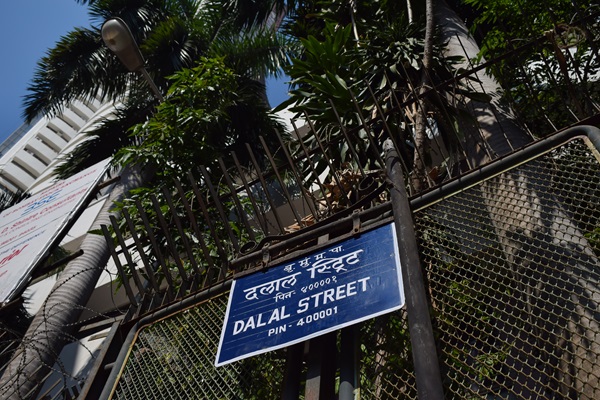.png)

Dhananjay Sinha, CEO and Co-Head of Institutional Equities at Systematix Group, has over 25 years of experience in macroeconomics, strategy, and equity research. A prolific writer, Dhananjay is known for his data-driven views on markets, sectors, and cycles.
July 15, 2025 at 2:42 AM IST
India’s equity market is struggling to sustain its partial recovery from April’s steep sell-off as the Trump administration’s sweeping new tariffs collide with a sharp slowdown in corporate earnings. While valuations have clawed back some ground after an unprecedented ₹92 trillion market capitalisation loss from the September 2024 peak, the outlook remains challenging as global trade tensions deepen, policy buffers shrink, and investor flows weaken.
Earnings growth is faltering. The Nifty 50’s profit growth slowed to an average of 3.5% in 2024-25, with just 0.25% growth in the January–March quarter. Early indications for the April–June quarter suggest that this weak trajectory is continuing, hurt by the 10% uniform tariff the US imposed from April 2025. Core sectors such as consumer goods, banking, IT and automobiles are witnessing broad-based demand slackness, leaving only materials with one-off support.
This earnings deceleration is stark when compared with the post-COVID surge, which saw profits growing at a 20% annual average between 2019-20 and 2023-24. The slowdown stands in contrast to the headline GDP growth of 7.4% in the January–March quarter, revealing a widening disconnect between macro indicators and corporate profitability. While consensus forecasts suggest 10% earnings growth for 2025-26 through 2027-28, the persistent cycle of downgrades points to a more conservative outlook closer to 5–6%.
The Reserve Bank of India has pumped in significant liquidity to counter slowing activity, with systemic surplus liquidity reaching 1.6% of bank deposits, roughly three times the long-term average. Yet credit growth excluding gold loans continues to ease, and the credit-deposit ratio has moderated, reflecting cautious lending. While monetary accommodation has done much of the heavy lifting, fiscal policy remains constrained and offers limited room to offset the external trade shock.
External Pressures
The global environment is increasingly fraught. The US tariff regime, intensified since April 2025, is evolving into a complex challenge that includes proposals for an additional 10% tariff on BRICS nations and sharp increases on sensitive sectors, such as 50% on steel and aluminium, 25% on non-USMCA auto parts and up to 200% on pharmaceuticals. China’s restrictions on rare earth magnets and fertilisers and the disruption of India’s electronics manufacturing supply chains add to the uncertainty.
Despite these headwinds, market valuations have recovered partially, with the Nifty’s trailing twelve-month price-to-earnings ratio rising 17% from its April 2025 low to around 23x. Yet this remains below the 2024 peak, while broader indices are still trading nearly 17% lower.
The drivers of further downside are clear: RBI’s push to boost retail lending could reduce surplus liquidity, while persistent tariff tensions and geopolitical risks are pushing market risk premiums higher. Weak foreign portfolio investment flows and lingering uncertainty around United States monetary policy, including elevated long-end yields in response to tariff-driven inflation, are also weighing on valuations.
Domestic investor flows are moderating as retail net worth erodes, pushing valuations toward pre-COVID averages. The market could settle closer to a 20x price-to-earnings range, implying modest headline returns and increasing the need for selective positioning and sector rotation.
Sectoral prospects also remain uneven. Consumer staples are battling low single-digit volume growth and margin pressure from competitive pricing and shifting consumer behaviour. IT services are expecting subdued sequential revenue growth, held back by discretionary spending cuts and tariff-related caution.
Banks are seeing slow advances in growth and squeezed net interest margins despite strong deposit mobilisation. Automobiles face input cost pressures, while cement margins depend on regional price realisations. Pharmaceuticals remain resilient, benefiting from niche products and currency effects, while metals are facing diverging fortunes between ferrous and non-ferrous segments.
Investors will need to be highly selective. In this challenging environment, sectors with pricing power, steady demand and lower global exposure may outperform, while narrative-driven trades are likely to underperform. A defensive approach focused on quality companies and careful sector allocation will be key to generating returns as India’s market navigates the twin shocks of global trade disruption and slowing earnings.




